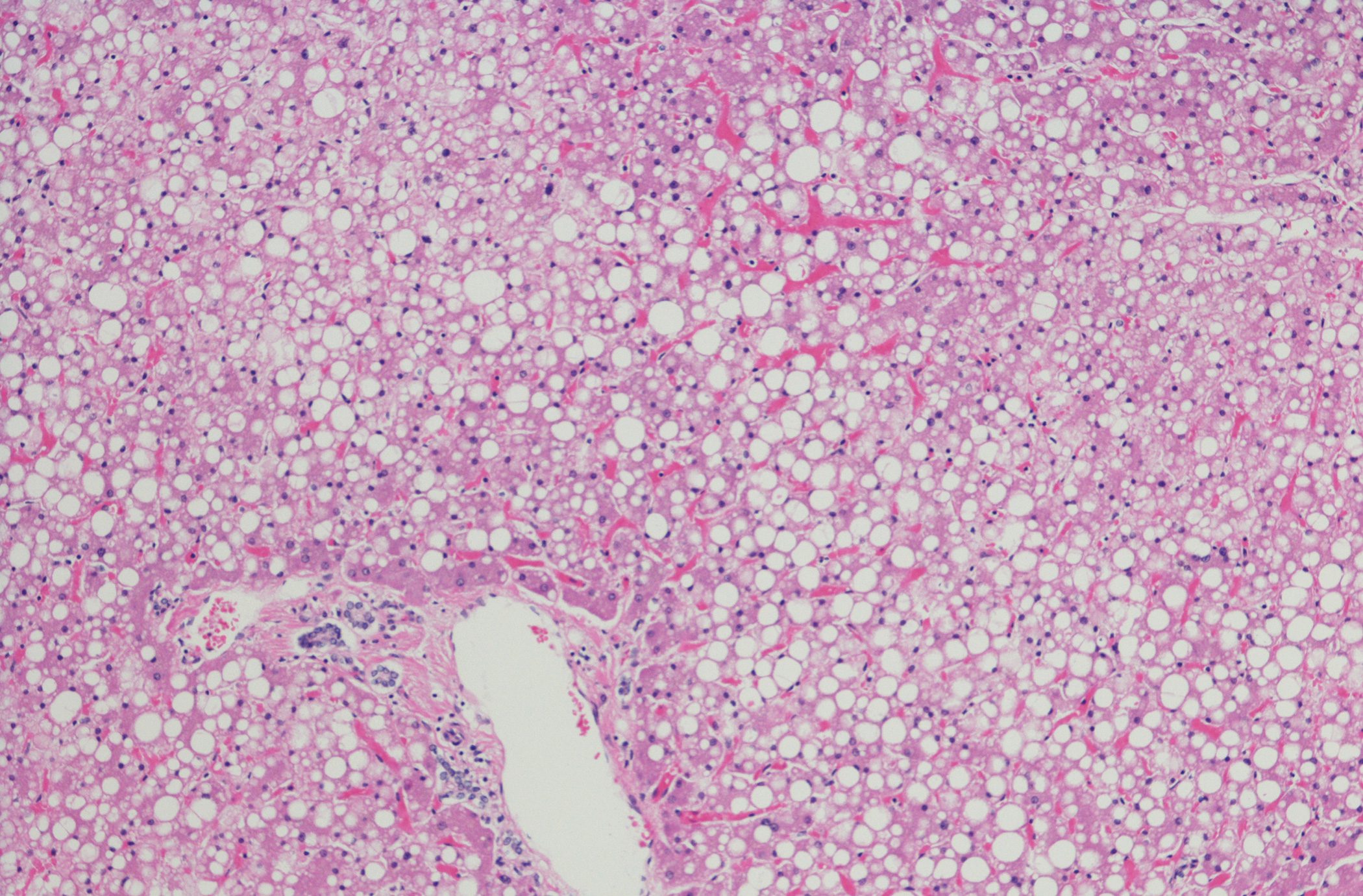Targeted therapy with hedgehog inhibitors is available for the treatment of locally advanced or metastatic basal cell carcinoma. Patients who initially show a good response but develop secondary resistance during the course of the disease represent a clinical challenge. This is illustrated by the example of a senior citizen who has reached the ‘best supportive care’ therapy stage three years after diagnosis.
In fair-skinned individuals, the average lifetime risk of developing basal cell carcinoma (BCC) is estimated to be 30% [1]. Metastasis is very rare in BCC and is reported to be 0.028 to 0.55%, although all cases may not be recorded [2,3]. A vast majority of BCC exhibit an abnormal Hedgehog signal transduction pathway [4]. Inhibitors of the Hedgehog signaling pathway enable targeted drug therapy for patients with locally advanced and symptomatic metastatic BCC, although resistance may develop during progression and the treatment strategy must be adapted. Mirjam Nägeli, MD, senior physician, Department of Dermatology, University Hospital Zurich, described the case of a patient who presented to the emergency department in 2019 due to back pain and further investigations led to the diagnosis of metastatic BCC [5]. Subsequently, an individualized treatment strategy was decided upon, using vismodegib and sonidegib, among others (box).

DNA sequencing: detection of mutations in the hedgehog gene
A biopsy was initially performed on the 72-year-old patient. “Histology showed exulcerated basosquamous carcinoma with moderate differentiation of the squamous cell component and evidence of nodular and infiltrative basal cell carcinoma components,” she said [5]. Imaging showed metastasis. “On the one hand, the lymph nodes cervical, on the other hand, also multiple bone metastases, especially in the glenoid right as well as along the axial and pelvic skeleton” [5]. That is why the patient suffered from bone pain, Dr. Nägeli explained. The patient underwent an FDA-approved next generation sequencing-based assay that identifies genomic alterations in over 300 cancer-related genes. Analysis from the primarius scapular right revealed a tumor mutation load of approximately 20. Detection of a mutation in the gene for Hedgehog confirmed that it was a basal cell carcinoma. A punch biopsy was taken from a bone metastasis from the glenoid on the right and processed. “This also shows the hedgehog mutation, so the bone metastases are really from basal cell carcinoma,” Dr. Nägeli explained [5].
Secondary resistance to Hedgehog pathway inhibitor.
The patient initially underwent plastic surgery despite bone metastases. Immunotherapy according to VAC* regimen was performed and the patient received the bone stabilizer denosumab. “At the same time, symptomatic bone metastases were treated with radiotherapy and the smoothened inhibitor vismodegib was started,” the speaker reported [5]. The patient took the latter for more than a year. Vismodegib is an antineoplastic drug from the group of hedgehog signaling pathway inhibitors (HHI), which inhibits the Smoothened receptor. Under this therapy, there was an initial response and a ‘mixed response’ during the course, which is why the addition of itraconazole (2 weeks on-off regimen) was then started. As a side effect, the patient lost 14 kg of body weight. With the Smoothened inhibitors, the big problem is resistance due to the Smoothened mutation, the speaker explained. This was the starting point for the addition of the triazole antifungal drug itraconazole, which also acts as a hedgehog inhibitor but attacks a different site and thus has a different resistance mechanism. The speaker reported that they had good experience with it and that tolerance was generally good, although liver values should be checked regularly.
* VAC = vincristine + actinomycin D + cyclophosphamide or ifosfamide.
Next treatment steps: cetuximab, cemiplimab, and switch to additional hedgehog inhibitor
After one year, progression was evident and therapy with cetuximab was started for a total of six months. Cetuximab is a therapeutic IgG1 chimeric monoclonal antibody that blocks the epidermal growth factor receptor ( EGFR). EGFR is expressed in BCC, and EGFR blockade can lead to regression of BCCs [7]. This was successfully tried in the patient, who had received cetuximab for a total of 6-7 months and initially showed a partial response. Since hypomagnesemia occurred as a side effect, the interval of infusions was extended to two weeks. Subsequently, cemiplimab was used [5]. This anti-PD-1 antibody is approved second-line in the EU and has a response rate of approximately 31% [6]. The patient initially showed a good response, in the course initially a ‘mixed response’ , and then a progression and as a side effect a myocarditis. Subsequently, the patient was switched to the hedgehog inhibitor sonidegib, and this therapy was continued for a period of four months. Regarding the switch from vismodegib to sonidegib, Dr. Nägeli explained that although there are hardly any studies, sonidegib is higher dosing and individual studies indicate an advantage of a switch for certain mutations [5]. “The effect is the same with both compounds, but the resistance mechanisms may be different, depending on the mutation,” the speaker elaborated. Finally, the patient was switched to platinum-based chemotherapy (4 cycles) and is currently being treated according to the “best supportive care” regimen [5].

Despite complications, the balance of the treatment is positive
The patient developed severe chronic normochromic normocytic anemia and urosepsis in tumor stent dysfunction on the left with E.coli/recurrent urinary tract infections during the course. In addition, acute and chronic renal insufficiency was found in association with renal metastases. EGFR therapy-associated side effects included severe hypomagnesemia, hypocalcemia, hypophosphatemia, and acneiform rash [5]. Immunotherapy-associated adverse events included subclinical hypothyroidism and NSTEMI type 2, in addition to mild myocarditis [5]. Myocarditis was treated with cortisone (1 mg/kg bw), for 2-3 months and tapering off as it progressed. On systemic steroids, the patient developed severe ARDS with Pneumocystis Jirovecii pneumonia and was transferred to the ICU and intubated. Subsequently, the patient recovered and therapy could be continued.
The patient is currently doing relatively well, with subjective well-being better than imaging findings (X-ray, CT) would suggest. She has no pain, lives at home and walks longer distances on a walker. Further laboratory testing would be waived at this time. She said it was gratifying that after more than three years of metastasis, she was doing well under the circumstances and thus above the two-year survival that was reported in a paper published in 2014 by McCusker et al. had been described in BCC patients with distant metastases, Dr. Nägeli said [5,8].
Congress: Skin Cancer Congress / Working Group Dermatologic Oncology
Literature:
- Dessinioti C, et al: Photochem Photobiol 2010; 481e91.86.
- Seidl-Philipp M, et al: J Dtsch Dermatol Ges 2021;19(7): 1021-1043.
- Rubin AI, Chen EH, Ratner D: N Engl J Med 2005; 353: 2262-2269.
- Tay EY-X, et al. Dermatol Ther (Lomb). 2019; 9: 33-49.
- “Therapy-refractory basal cell carcinoma,” Mirjam Nägeli, MD, German Skin Cancer Congress (ADO), Hannover, Sept. 15, 2022.
- Stratigos AJ, et al: Lancet Oncol 2021; 22(6): 848-857.
- Stelkovics E, et al: Histol Histopathol 2013;28(7): 941-954.
- Mc Cusker M, et al: Eur J Cancer 2014; 50: 774-783.
- Amakye D, et al: Nat Med 2014; 19: 1410-1422.
- Hung QD, et al: Oncotarget 2021; 12(20): 2089-2100.
- Ramelyte E, et al: Br J Dermatol 2021; 184(2): 359-361.












